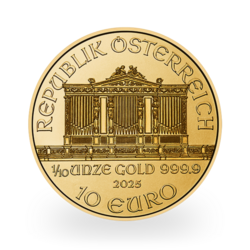As predicted by virtually everybody, even itself, the United States Federal Reserve lifted its benchmark interest rate by 0.25 to a maximum 1.5% at its December meeting. While offering perhaps its most positive assessment of the US economy in a decade, the Federal Open Market Committee (FOMC) struck a relatively cautious tone for next year, signalling the likelihood of three rate hikes in 2018, not four.
With a changing of the guard imminent at the top of the Reserve, such forecasting becomes somewhat trickier. This decision on rates marked the final public hurrah for Chair Janet L. Yellen, who steps down in February in favor of Jerome Powell, once he is confirmed (which is a foregone conclusion). Already a Fed governor with influence on the interest rate policy, Mr. Powell is widely thought to hew closely to the established path. However, most investors (in a recent Evercore ISI poll) believe he will be more of an increase hawk. For her part, Ms. Yellen said she sees no “significant” departure from Fed policies in place since the banking crisis of 2008.
The Economy is Growing – Inflation is Not
Justification for the interest rate hike comes from indicators that the US economy is in good health. Unemployment is at its lowest level since Y2K and consumers are spending to the tune of 2.5% growth for the year. With the Trump administration’s tax plan expected to inject even more money into the marketplace next year, it is a little surprising that the governors predict growth for 2018 to remain flat at 2.5%. The reason for their cautious view appears to be inflation.
The Fed predicts inflation will remain below its target of 2% next year, and rise no higher than 2% in 2019 and 2020. In fact, two FOMC officials (Charles Evans of Chicago and Neel Kashkari of Minneapolis) actually voted against this rate increase, arguing that there was no need for it based on the stubbornly low inflation pressure. The weight of their influence on new Chair Powell, known as a consensus-seeker, remains to be seen, as will the influence of the man who appointed him: President Donald J. Trump, known as a fan of low interest rates and predictor of 4% GDP growth, a rate Ms. Yellen categorized as “challenging” to achieve.
What Next?
With the stock market running hot, traders and analysts are initially expressing disbelief at the Fed forecast of three (not four) interest rate hikes in 2018. But how does the Fed view the record-setting markets? When asked if a bubble was forming, Ms. Yellen stated the Board’s position on the level of asset valuations as “elevated…(not) necessarily overvalued.”
Wall Street, anticipating stronger growth on the coming tax cut, seems to be willing an extra rate increase, to a full point, in 2018. The Fed, however, seems to be intent on tracking inflation and acting accordingly. It should be noted that the two dissenters to this increase (Evans and Kashkari) will not have FOMC votes next year.
The Impact on Gold
With the December quarter-point increase fully anticipated, it was already factored in to the markets. Interestingly, stocks dipped after the official announcement while the price of gold rose. This can be explained by what was not expressly known: the outlook for 2018. The Federal Reserve’s reassertion of its commitment to a dovish, eye-on-inflation approach could lessen any short-term rush toward yield-bearing assets.
A more telling factor may very well be the Trump administration’s tax cuts, at once pouring money into the economy at the cost of billions to the US National Debt. It continues to be an all-too-simple matter to print more money. The prudent investor remembers that the same does not hold true for gold, whether in 2017, 2018, or ever.
Reproduction, in whole or in part, is authorized as long as it includes all the text hyperlinks and a link back to the original source.
The information contained in this article is for information purposes only and does not constitute investment advice or a recommendation to buy or sell.

















